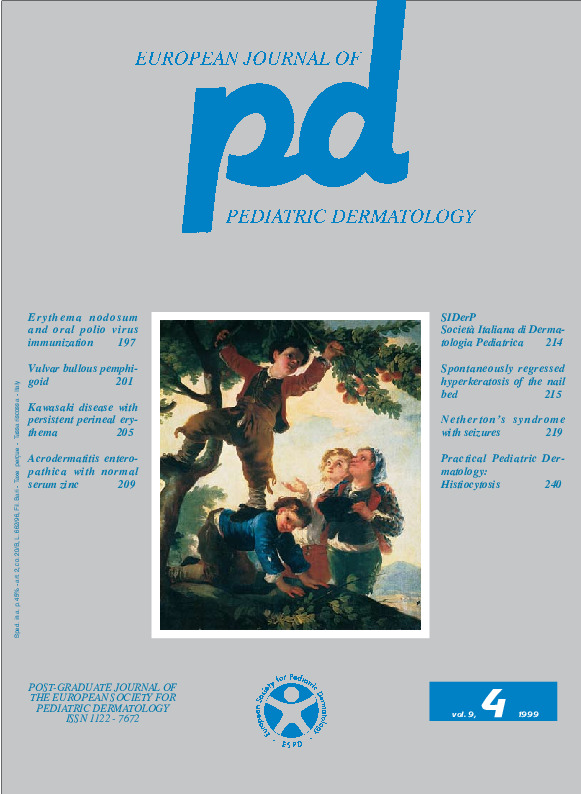Acrodermatitis enteropathica. A benign case with normal serum zinc.
Downloads
How to Cite
Jordanova I., Trashlieva M., Koitchev K. 1999. Acrodermatitis enteropathica. A benign case with normal serum zinc. Eur. J. Pediat. Dermatol. 9 (4):209-13.
pp. 209-13
Abstract
M.H.K. was a 14 months old girl. The disease started at 8 months of age with well-demarcated erythematous plaques with moderate scaling, which were situated on the periorificial regions, knees and extremities. The hairs were thin and light colored. The nails were dystrophic. The mucous membranes were not affected. The child never had diarrhea and itch. The blood count and biochemical index were normal, except for increased eosinophils -11%-, without parasitologic pathology. Serum zinc and alkaline phosphatase were within the normal limits, the IgA decreased and the ratio Th/Ts increased. Cultures from the skin, nails and feces did not grow Candida albicans. On light microscopy, there was slight hyperkeratosis, acanthosis and spongiosis in the epidermis, dilated blood vessels and mixed cells infiltration in the upper dermis. On electron microscopy, enlarged intercellular spaces, microvesiculation, and edema between the collagen fibres were shown. Because of the characteristic clinical features with periorificial localization of the rash, normal value of serum zinc and significant improvement after 5 days of treatment with oral zinc sulphate (130 mg/per day), the case here reported should be considered a benign variant of acrodermatitis enteropathica.Keywords
Acrodermatitis enteropathica, Zinc deficiency

